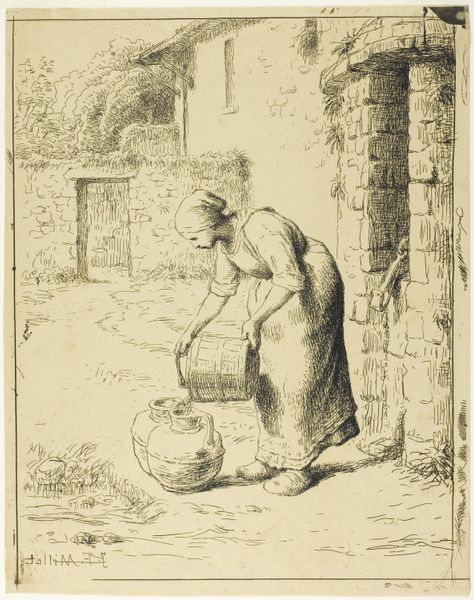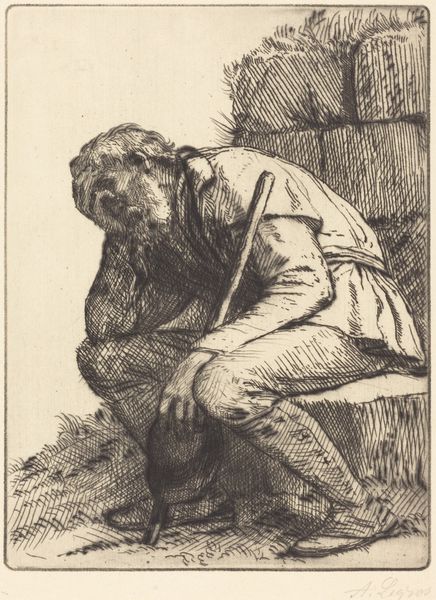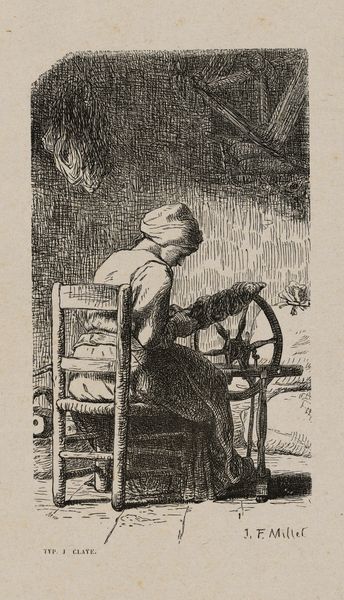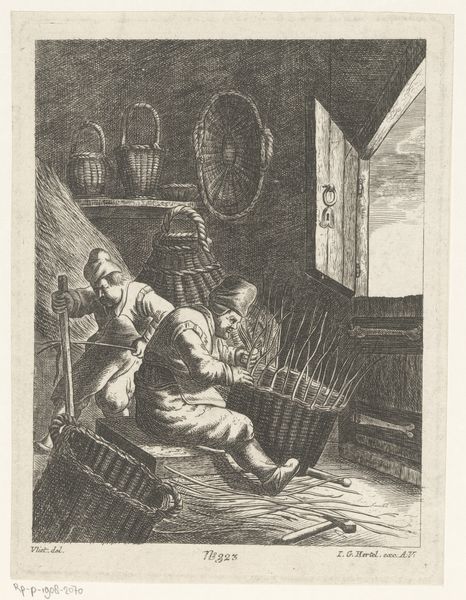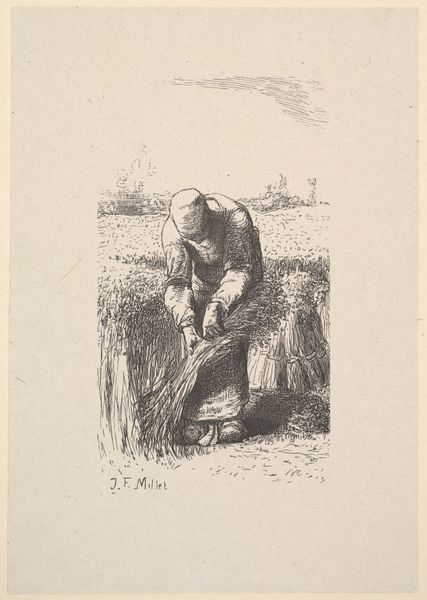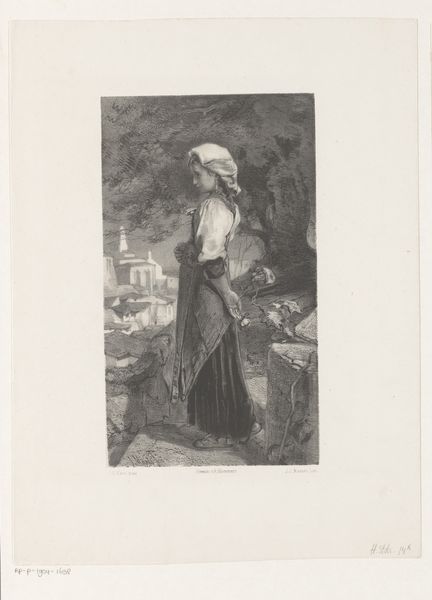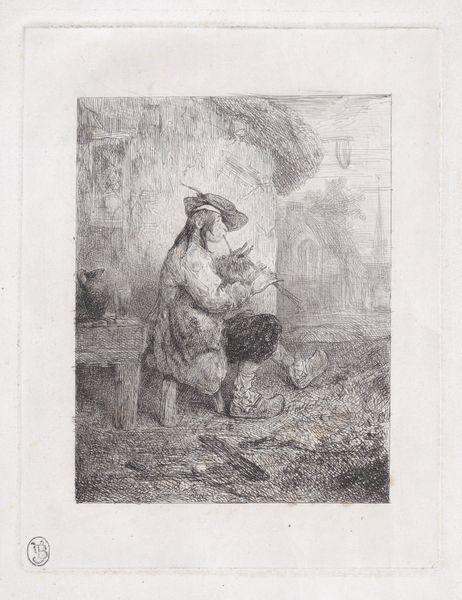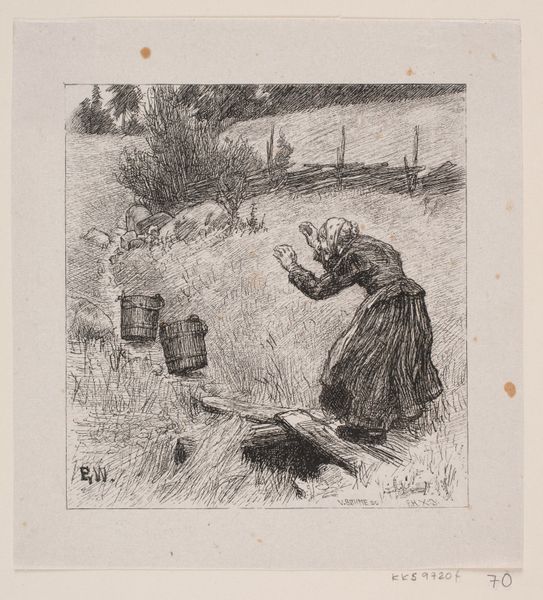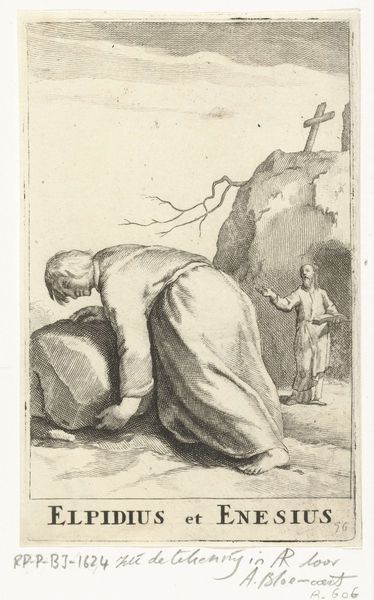
Dimensions: block: 5 1/4 x 2 15/16 in. (13.4 x 7.5 cm)
Copyright: Public Domain
Editor: Here we have Jean-François Millet's "Woman Cutting Wheat," created in 1853, an etching currently held at the Metropolitan Museum of Art. I’m immediately struck by how much the artist focuses on the labor itself; the woman seems almost monumental in her task, despite the small scale. What’s your take on this, seeing it through your expert eyes? Curator: What I see is a powerful statement about labor and the often-overlooked contributions of women. Millet, working in the mid-19th century, was acutely aware of the social and economic realities of rural life. This piece challenges the romanticized view of peasantry, instead showing the grit and physical demands of their existence. Consider the posture, the unseen face – how do they shape your understanding? Editor: I hadn't thought about the unseen face, but it certainly individualizes and universalizes the work at the same time. Does this portrayal fit into any larger trends of the time? Curator: Absolutely. Millet was part of a growing Realist movement that sought to depict everyday life, and the lives of the working class, with unflinching honesty. This contrasted sharply with the idealized depictions in academic art. By focusing on this anonymous woman's labor, Millet brings attention to the social hierarchies and the immense contributions of women, even within their own class. He's raising questions of visibility and value. Editor: That really reframes how I see the work! It's not just a picture of a woman working, but a commentary on the dignity and struggle inherent in that work. It almost seems revolutionary for its time. Curator: Precisely. And think about who was buying art at the time. This image would be a potent challenge to their comfortable worldviews, potentially sparking conversations – even discomfort – about social justice. Ultimately, it pushes us to ask who is seen, who is unseen, and whose stories are being told. Editor: It’s incredible how much this small etching can communicate about broader social and political concerns. Thank you, that’s given me so much to think about! Curator: My pleasure. I think art has that transformative power if you permit yourself to see its deep roots and far-reaching tendrils.
Comments
No comments
Be the first to comment and join the conversation on the ultimate creative platform.


